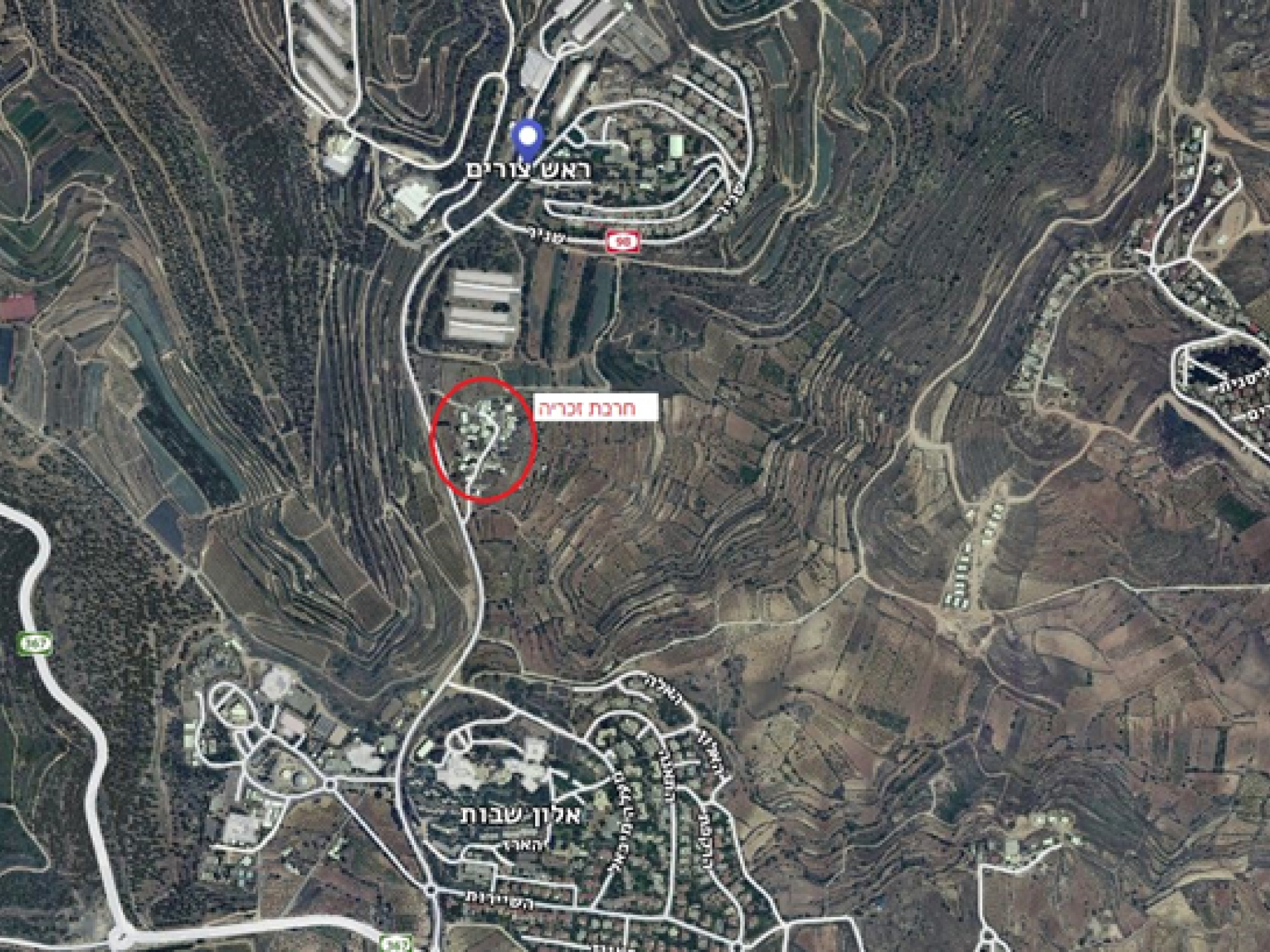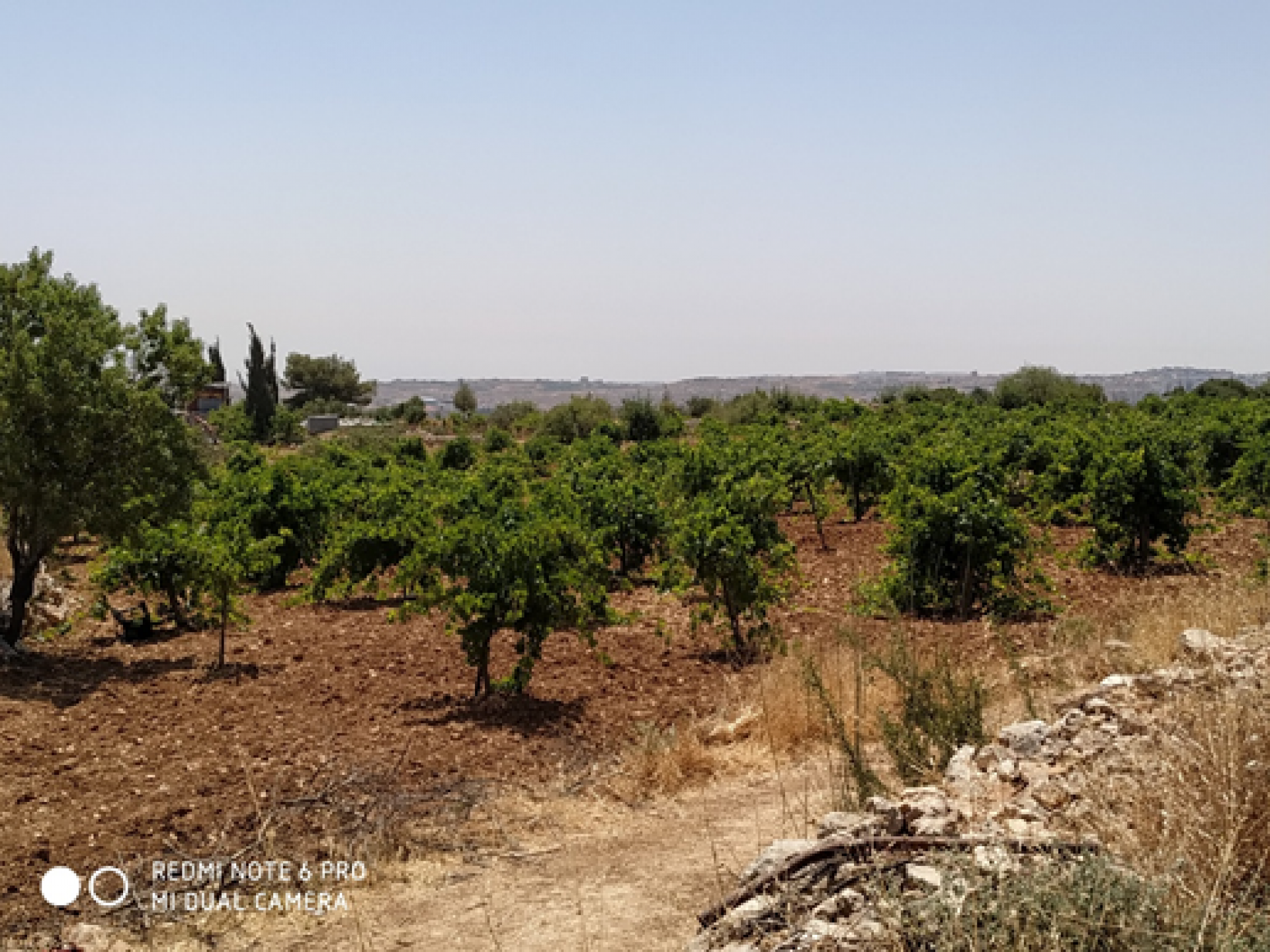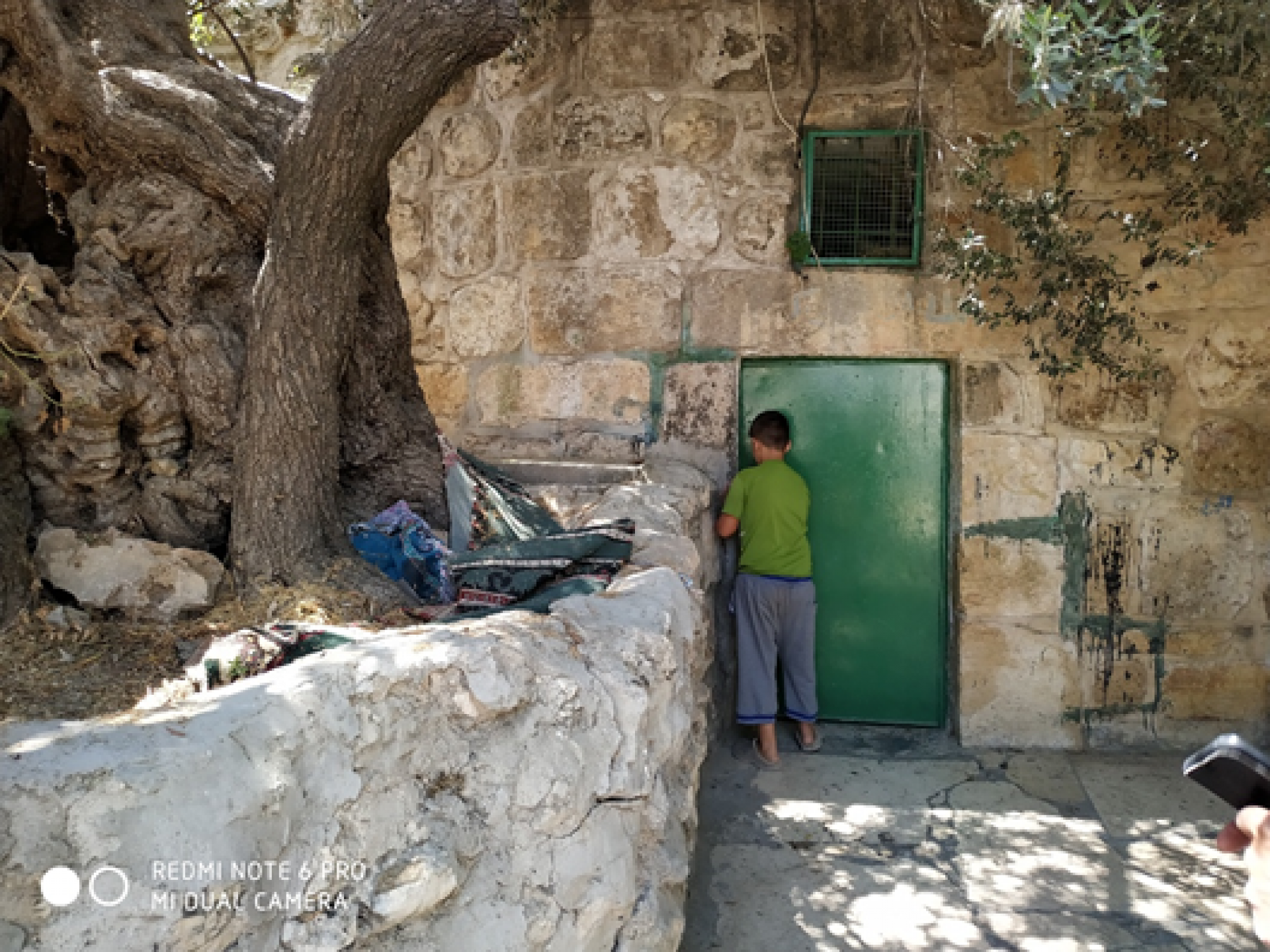Khirbet Zakariya, Halhul and Sa’ir
Khirbet Zakariya
This is a tiny hamlet – 650 residents, located between the settler-colonies Alon Shevut and Rosh Tzurim. In the hamlet are an ancient maqam and a tomb commemorating the prophet Zachary (see report of July 25, 2019). Thanks to the sacred site inside the hamlet, the homes have so far been spared demolition and the villagers were not expelled after the neighboring Rosh Tzurim settler-colony was founded. Still, the villagers were forbidden to complete the construction of the minaret that they began to build 35 years ago.
Davar (Israeli newspaper) of August 4, 1969, writes: “Following the claims of Muslim religious leaders and farmers living on the land of En Tzurim that Khirbet Zakariya is a sacred Muslim site, officials of the Civil Administration accompanied by the Staff Officer for Religious Matters at the Judea and Samaria Israeli Army HQ visited there, and after surveying work, Kirbet Zakariya (Zachary’s Tomb) was removed from the lands confiscated for the settlers of Rosh Tzurim. The Military Government intends to renovate the site and declared sacred, so people can visit there unhampered.”
accompanied by the Staff Officer for Religious Matters at the Judea and Samaria Israeli Army HQ visited there, and after surveying work, Kirbet Zakariya (Zachary’s Tomb) was removed from the lands confiscated for the settlers of Rosh Tzurim. The Military Government intends to renovate the site and declared sacred, so people can visit there unhampered.”
Unlike this maqam, Nabi Daniyal has seen an entirely different treatment by the Israeli occupation. The hills on which it is located may still be seen from the village. Its elders still remember visiting and praying there. Now nothing is left of it and since it is located within the grounds of settler-colony Neve Daniel, they cannot approach. This maqam was not spared, and did not enjoy the status of a sacred site, and its demolition about 15 years ago went unnoticed. On Mapa website one still reads that Nabi Daniyal is “a Muslim sacred site in the South Hebron Hills, about half a kilometer from the settlement of Neve Daniel”.
At Khirbet Zakariya we met with council chairman Abu A. in his home, at the room designated for receiving guests and for council meetings. The village has no council building.
All his family members live there – parents, sons, daughters in law and grandchildren. The children’s voices mix into our conversation and obviously for A. this is home routine. It feels suffocating. They are not allowed to enlarge the house, even a bit. Or add classrooms to the hamlet’s school. From the village yards, the houses of Alon Shevut settler-colony are seen, lush among their greenery, their spacious schools, sports hall and swimming pool. The Palestinian children’s questions – why can’t their homes or school be enlarged – remain unanswered. They are not even allowed to build a clinic and have to make do with a container.
At the recommendation of the DCO, a masterplan for building a schoolhouse was turned in but rejected. Bimkom (planners and architects for human rights) is helping appeal.
The villagers make their living especially from farming without irrigation. Vineyards surround the area. The difference is obvious between the thick and lush vineyards of the settler-colonists and the paltry Palestinian ones. We were told that a year ago, settler-colonists uprooted vines before the grapes were even ripe. The hamlet also possesses a small cattle and goat milk product project, as well as producing honey and grape concentrate.
Maqams in the Towns of Halhul and Sa’ir
Muslim tradition respects Biblical figures and erects prayer structures to commemorate them, as it does for Islamic figures not mentioned in the Bible. Maqams Nabi Yunes commemorating the Prophet Jonah in Halhul, and Nabi ‘Is commemorating Esau, Jacob’s brother in Sa’ir join a series of maqams erected by Muslims to commemorate Biblical figures. Among them is Nabi Matta in Beit Umar commemorating Jonah’s father and Nabi Lot in Bani Na’im.
These maqams are acknowledged in the Muslim world. They have been expanded into mosques, complete with minaret and spacious prayer halls, and attract visitors from Islamic countries.
In our visit to Halhul in search of maqam Nabi Yunes we reached a sacred, ancient site. This is attested to by the bulky, time-weathered olive tree trunk in its yard.





